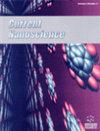Weaving the Future of Topical Medicine: A Journey with Electrospinning Nanofibre Scaffolds
IF 1.5
4区 材料科学
Q4 BIOTECHNOLOGY & APPLIED MICROBIOLOGY
引用次数: 0
Abstract
: The pharmaceutical sciences are gradually shielding mankind from a plethora of deadly but as-of-yet-undiscovered ailments. Many diseases, some of which can be fatal, have their initial line of defence on the skin. A significant challenge for scientists is the development of appropriate pharmacological formulations for transdermal drug administration. Low side effect risk reduces first-pass impact, and good patient compliance makes transdermal distribution superior to oral delivery. This is why transdermal medication delivery is so important. Thanks to advancements in pharmaceutical delivery systems, the skin can now absorb medications more effectively. Researchers from different parts of the globe have investigated many different kinds of medications as possible transdermal delivery routes using electrospinning nanofibres. The skin can more easily absorb therapeutic compounds thanks to the nanofibres' ability to concentrate them. It is possible to load hydrophilic and lipophilic medications onto polymeric nanofibres. Another option is the transdermal distribution of biopolymer nanofibres. Over long periods of time, they control the release of medicinal substances. Nanofibres and nanoparticles allow for the controlled release of both hydrophobic and hydrophilic drugs. Transdermal and topical medication delivery using polymeric electrospinning nanofibres laden with nanoparticles and medicines is the subject of this research review. After that, we'll look at some practical instances of engineers using electrospinning fibres to control the release of drugs in reaction to environmental and internal factors. Afterwards, we will quickly go over the latest developments in tissue engineering, hard tissue engineering [which includes repairing musculoskeletal systems, bones, and cartilage], and cancer therapy that uses electrospin nanofiber scaffolds to control the distribution of drugs. Thanks to recent advancements in medicine and pharmaceuticals, nanofibres may soon be able to transport a wide variety of drugs, allowing for more targeted methods of cellular regeneration and topical medication delivery.编织外用药物的未来:电纺纳米纤维支架之旅
:医药科学正在逐渐保护人类免受大量致命但尚未发现的疾病的侵害。许多疾病(其中有些可能是致命的)的最初防线都在皮肤上。科学家们面临的一个重大挑战是开发出适合透皮给药的药理配方。透皮给药的副作用风险低,减少了药物的首过效应,而且患者依从性好,因此透皮给药优于口服给药。这就是透皮给药如此重要的原因。由于给药系统的进步,皮肤现在可以更有效地吸收药物。来自全球不同地区的研究人员利用电纺丝纳米纤维研究了多种可能的透皮给药途径。由于纳米纤维具有浓缩能力,皮肤可以更容易地吸收治疗化合物。可以将亲水性和亲油性药物添加到聚合物纳米纤维上。另一种选择是生物聚合物纳米纤维的透皮分布。在很长一段时间内,它们可以控制药物的释放。纳米纤维和纳米颗粒可控制疏水性和亲水性药物的释放。本研究综述的主题是利用含有纳米颗粒和药物的聚合物电纺丝纳米纤维透皮和局部给药。之后,我们将了解工程师利用电纺丝纤维控制药物释放以应对环境和内部因素的一些实际案例。之后,我们将快速浏览组织工程、硬组织工程(包括修复肌肉骨骼系统、骨骼和软骨)以及利用电纺丝纳米纤维支架控制药物分布的癌症疗法的最新进展。由于医学和制药领域的最新进展,纳米纤维可能很快就能输送多种药物,从而实现更有针对性的细胞再生和局部给药方法。
本文章由计算机程序翻译,如有差异,请以英文原文为准。
求助全文
约1分钟内获得全文
求助全文
来源期刊

Current Nanoscience
工程技术-材料科学:综合
CiteScore
3.50
自引率
6.70%
发文量
83
审稿时长
4.4 months
期刊介绍:
Current Nanoscience publishes (a) Authoritative/Mini Reviews, and (b) Original Research and Highlights written by experts covering the most recent advances in nanoscience and nanotechnology. All aspects of the field are represented including nano-structures, nano-bubbles, nano-droplets and nanofluids. Applications of nanoscience in physics, material science, chemistry, synthesis, environmental science, electronics, biomedical nanotechnology, biomedical engineering, biotechnology, medicine and pharmaceuticals are also covered. The journal is essential to all researches involved in nanoscience and its applied and fundamental areas of science, chemistry, physics, material science, engineering and medicine.
Current Nanoscience also welcomes submissions on the following topics of Nanoscience and Nanotechnology:
Nanoelectronics and photonics
Advanced Nanomaterials
Nanofabrication and measurement
Nanobiotechnology and nanomedicine
Nanotechnology for energy
Sensors and actuator
Computational nanoscience and technology.
 求助内容:
求助内容: 应助结果提醒方式:
应助结果提醒方式:


